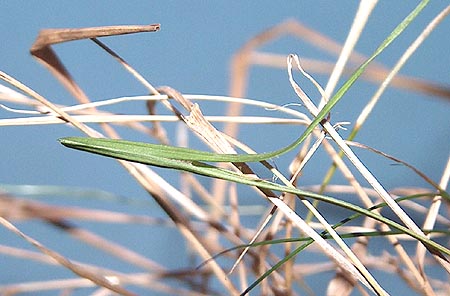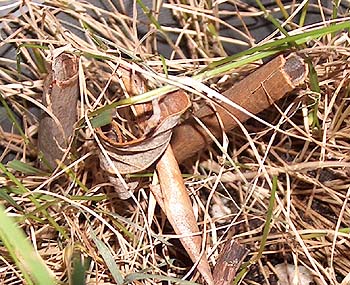Newly laid eggs
Fertile eggs
Mature eggs with female abdominal hairs left on the eggs, presumably for camouflage
Eggs after their tops have been breached by the developed larvae. The larvae may just sit inside the eggs with their black heads blocking the openings and will not emerge until wetted by autumn rain, usually combined with a seasonal drop in air temperatures.

Newly constructed tip-folded leaf shelter on weeping rice-grass, typical of first to third instar stage larvae

Rolled leaf and bark debris within host grass used as shelters by fourth to fifth instar larvae. The shelters are lined with silk and the ends anchored with silk to the grass stems.
Tip-folded leaf shelter hanging by the midrib vein of the eaten grass leaf on weeping rice-grass
Tip-folded leaf shelter constructed on kikuyu by an early fourth instar (10 mm) larva
Pupae (15 mm)
Pupa head area
(operculum)
Pupa posterior end cremaster and hooks
A double-rolled leaf within host grass being used as a shelter by a fifth instar larva on left (lower part of head just showing), and a pupa on the right (white head showing). The opening to the pupa shelter is usually not sealed by a silk web.
Opening of pupa shelter is sometimes partially blocked by strong strands of silk.
Closeup of pupa head in above leaf shelter, showing extra frontal spots
All photography by R. Grund unless stated otherwise.